This Ecuador travel wiki page will help guide travelers with quick and relevant information to consider when planning and visiting the country. It is difficult to find all the relevant information on Ecuadorian culture, safety, travel restrictions, and things to do, so we summarize it all here. If anything is stale or outdated, please let us know! Let’s dive in and explore more high-level information as an Ecuador trip planner.
Last updated January 23rd of 2024.
Table of contents
National Information & Culture
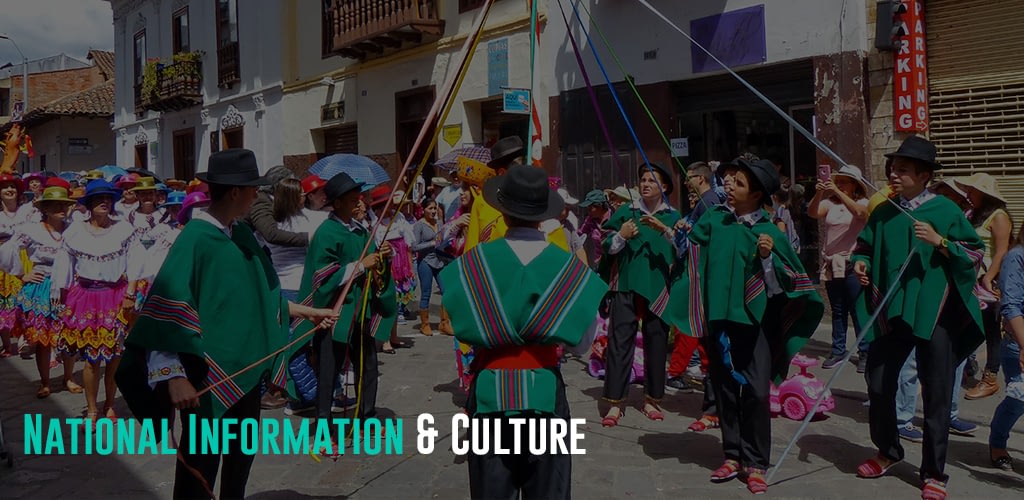
Ecuador, officially the Republic of Ecuador, is a country in northwestern South America, situated along the equator. It shares land borders with Colombia on the north and Peru on the east and south. Facing the Pacific Ocean on the west, Ecuador also includes the Galápagos Islands, 1,000 kilometers west of the mainland. The country’s capital is Quito, while the largest city is Guayaquil. Despite being a South American country, Ecuador’s official currency is the US Dollar ($).
Ecuador has a long history of Inca Empire assimilation and Spanish colonization. Its diverse population includes mestizos, Europeans, Native Americans, Africans, and Asians. A developing nation, Ecuador’s economy relies on exports, especially petroleum and agriculture.
Ecuador may have a more relaxed approach to time and pace of life than some Western countries. Be prepared for “mañana” (tomorrow) time expectations. Expect some flexibility in schedules, especially in social situations.
Famous for its biodiversity, Ecuador is one of the 17 megadiverse countries. It is recognized for its unique flora and fauna, including the Galápagos Islands. Ecuadorians proudly commit to their ecological heritage through its 2008 constitution, the first globally to legally acknowledge the enforceable rights of nature. Hence, respect the environment and follow ecotourism guidelines, especially in the Galápagos Islands.
With its location on the equator, Ecuador has a higher temperature year-round. Also, Mount Chimborazo, Ecuador’s highest peak, has the Earth’s closest location to the sun. So, don’t forget your sunblock when exploring the country.
Lastly, be prepared to be at high altitudes. Most of Ecuador is above 2500 meters above sea level, including the capital city of Quito.
Visit Ecuador’s official tourism website for more information and planning your trip.
Special Travel Considerations
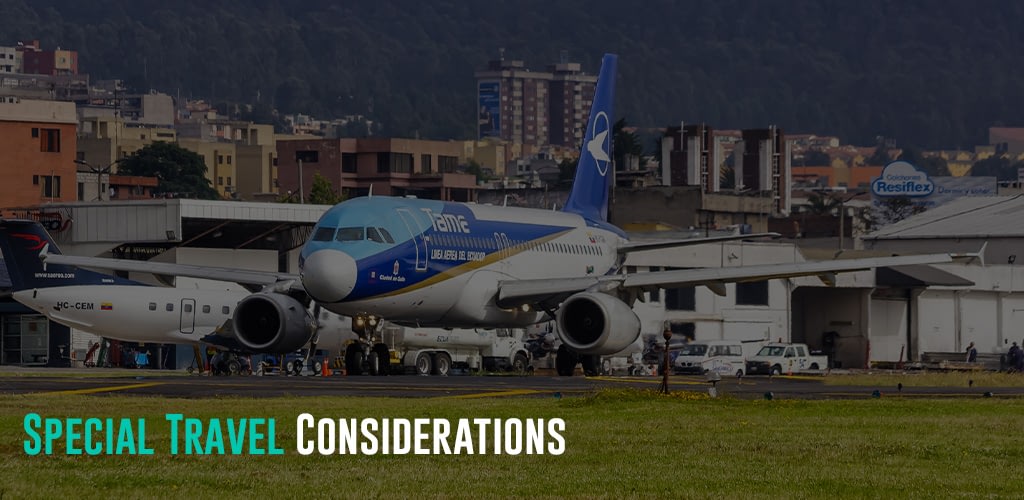
Each country and destination has rules and regulations that every traveler must consider. Hence, check the following considerations for hassle-free travel to Ecuador.
Covid-19 Protocol
Effective February 16, 2023, Ecuador has no entry restrictions relative to the Covid-19 pandemic. Hence, Covid-19 testing and vaccination certificates are not necessary to enter Ecuador. However, the coronavirus policy may vary over time, and it is best to check Ecuador’s latest updates related to COVID-19 when planning a trip.
Travel Insurance
Travel and health insurance are not mandatory for travelers to enter Ecuador. However, it is required for tourists when visiting the Galapagos Islands. The travel insurance must cover emergency medical treatment, including COVID-19, repatriation, and evacuation. Travel insurance can protect you against the inconvenience of injury, medical emergencies, theft, and flight cancellations. In addition, it is a comprehensive protection in case anything goes wrong with your trip.
State of Emergency
Ecuadorian president declared a 60-day nationwide state of emergency on January 8, 2024, following the escape of a high-profile prisoner and numerous occurrences of gang-related crimes against private, public, and government institutions. The state of emergency includes a nationwide curfew from 11 PM to 5 AM. Exemptions from the curfew are essential workers and individuals traveling to and from the airport with a flight during the curfew hours. As such, travelers catching a flight to and from the airport should carry their confirmed flight itinerary.
Vaccines
While not required, vaccination against yellow fever is recommended for all travelers who intend to visit the provinces of the Ecuadorian Amazon (Napo, Pastaza, Orellana, Sucumbíos, Zamora Chinchipe, and Morona Santiago). Meanwhile, travelers who visit countries with active yellow fever outbreaks, including Brazil, the Democratic Republic of the Congo, and Uganda, must present their international vaccination certificate following the regulations of the International Health Regulations-IHR. The vaccine must be applied ten days before traveling to risk areas.
Visa Information
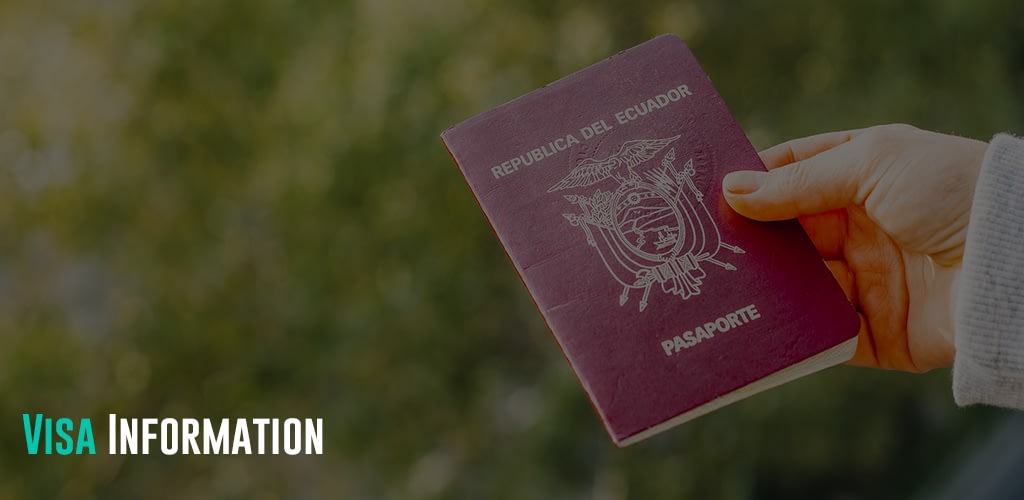
Most visitors are visa-exempt to Ecuador and can stay for business or tourism for up to 90 days, while nationals from Peru allow a maximum stay of 180 days. Meanwhile, travelers from 44 countries must obtain a visa in advance to enter the country. After booking an appointment, visa applications must be submitted to the nearest Ecuadorian embassies and consulates. However, not all embassies have an electronic booking appointment system.
In addition to a tourist visa, travelers to Ecuador must have proof of onward or return ticket and at least six months’ valid passport. Nationals from Argentina, Bolivia, Brazil, Chile, Colombia, Paraguay, Peru, and Uruguay enjoy passport exemptions to Ecuador and can enter the country using a national ID card.
Galapagos Island
Aside from visas and mandatory health insurance for foreign travelers, all visitors to the Galapagos Islands must obtain a Transit Control Card. It is available at the Quito and Guayaquil airports for $20 and must be presented upon check-in. For faster airport transactions, travelers may pre-register through the Galapagos government website and provide demographic information per the Galapagos Special Law and relevant regulations.
The Galapagos Islands also collect entrance fees to protected areas. The cost for foreign tourists is $100, CAN or Mercosur is $50, and $6 for local tourists. Admission to Isabela Islands is $10 for foreigners and $5 for Ecuadorians. Children under 12 years old can avail of a 50% discount.
Popular Attractions
Ecuador is the Land of the Four Worlds, where the Galapagos, Coast, Andes, and Amazon regions offer diverse landscapes, ancient cultures, unique flavors, and authentic adventures. This South American gem also showcases rich history, indigenous cultures, colonial architecture, and natural wonders, from lush rainforests to glaciated volcanoes.
Outdoor enthusiasts can embark on endless climbing and trekking adventures and summit Chimborazo’s closest point to the sun. At the same time, nature lovers can explore ecologically essential forests in the Amazon. Wildlife enthusiasts find paradise in the Galápagos Islands, and pristine tropical beaches beckon sun seekers. Ecuador is also home to numerous UNESCO World Heritage Sites, including the capital city of Quito, a testament to the country’s rich history.
Galapagos Islands
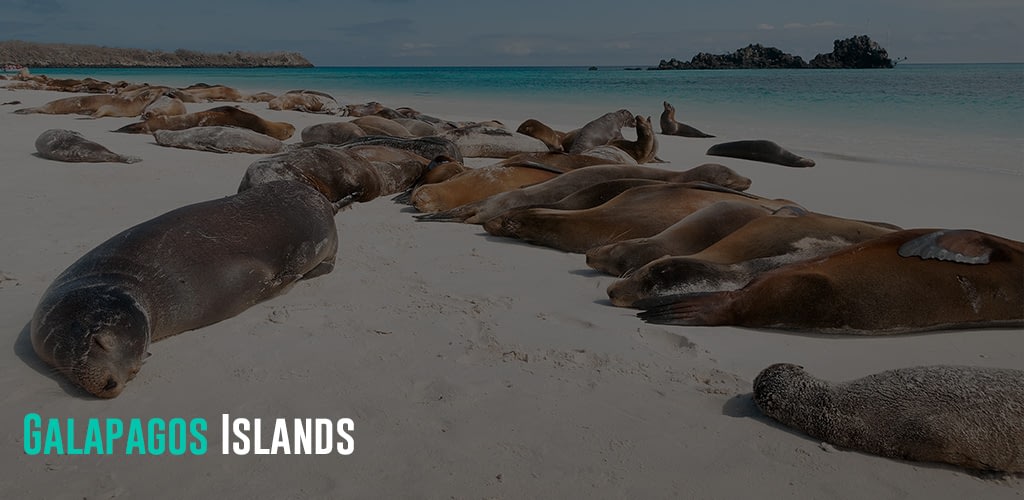
Galapagos Islands, a unique natural treasure 1000 km from Ecuador’s coast, are known for biodiversity and their connection to evolution theory. A UNESCO World Heritage Site, most islands form part of the Galapagos National Park, requiring guided tours. The islands of San Cristobal, Santa Cruz, and Isabela comprise the Galapagos. The island’s unique ecosystem offers exceptional wildlife viewing. Dive in crystal clear waters, explore nature trails, and marvel at marine life through scuba diving and snorkeling. Notable and featured species are Galapagos giant tortoise, blue-footed boobies, marine iguanas, Darwin’s finches, Galapagos albatross, Galapagos penguins, and sea lions.
San Cristobal Island has lush vegetation, white sand beaches, and crystal clear waters. It’s a haven for diverse wildlife, ideal for scuba diving, snorkeling, and experiential activities. Sea lions are also abundant on the shores of San Cristobal.
In Santa Cruz, travelers can find an impressive geological landscape with lava tunnels. Check out the giant tortoise ranches and witness unique marine lizards resting on coral sand. Additionally, a behind-the-scenes visit to the Charles Darwin Research Station in Puerto Ayora is recommended for a deeper understanding of the region’s conservation efforts.
Meanwhile, the largest island of Isabela boasts intermittently active volcanoes, marine life, and the only tropical penguins. Available tourist activities include surfing, diving, kayaking, hiking, and biking.
Quito
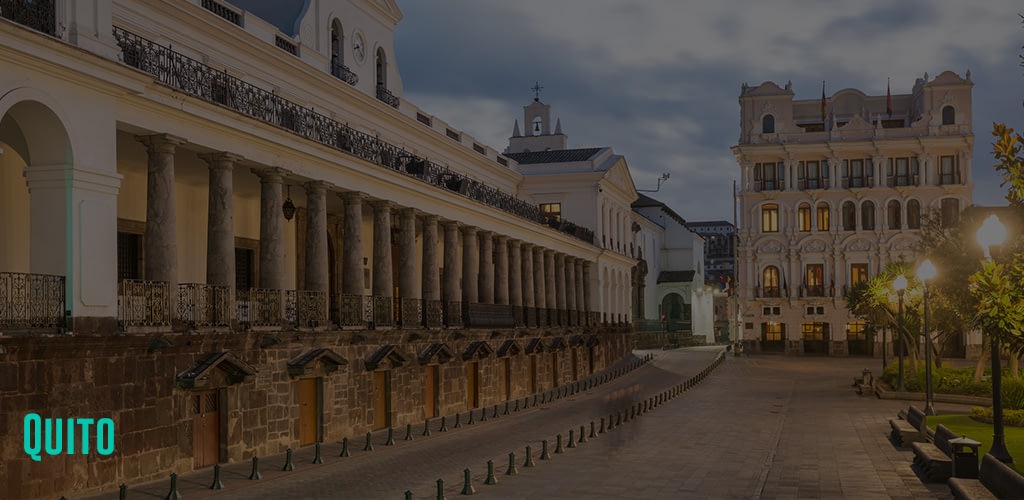
Quito, the capital of Ecuador, is a vibrant city nestled in the heart of the Andes. As Latin America’s oldest and highest capital, Quito is the country’s political, economic, administrative, artistic, sports, and cultural epicenter. It is recognized as a UNESCO World Heritage Site and boasts the region’s best-preserved colonial architecture and historic center.
The city attracts visitors with its contrast of the vibrant New Town and the charming colonial architecture of the Old Town. Notable landmarks include the La Basílica Tower and well-maintained city parks in the Old Town. Colonial architecture, museums, and historic cathedrals like La Iglesia de la Compañía de Jesús and the Iglesia y Monasterio de San Francisco offer rich cultural experiences.
Another top activity is exploring Plaza Grande, surrounded by landmarks such as the cathedral, Presidential Palace, and Archbishop’s Palace. The lively Calle La Ronda, with its restaurants, cafés, and art galleries, adds to the vibrant atmosphere of Quito, making it a must-visit destination in Ecuador.
Cuenca
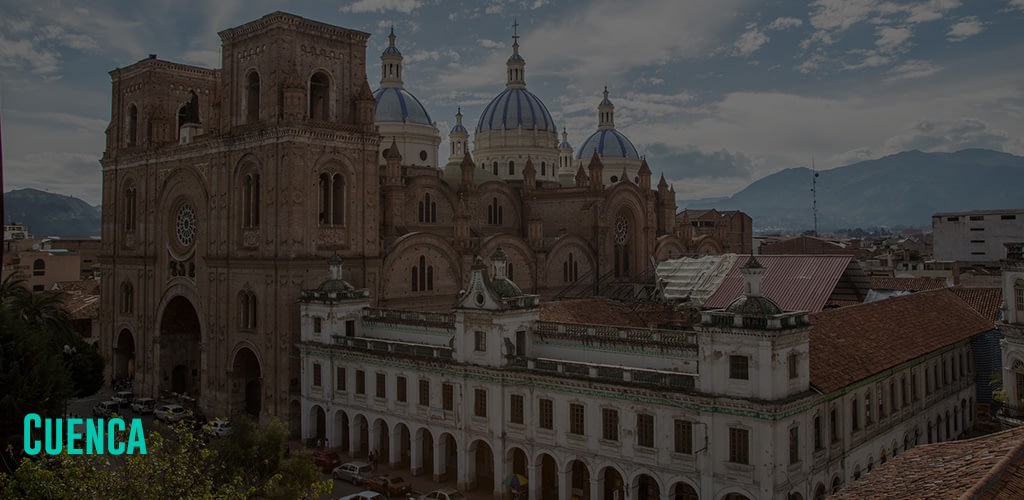
The city of Cuenca, a UNESCO World Heritage Site in southern Ecuador, is known for its architectural and cultural richness. In a spring valley crossed by four rivers, Cuenca features the oldest residential area with colonial and republican styles. The city is also renowned for its toquilla straw hats. Moreover, it has a delightful blend of Spanish architecture and open-air markets.
The historic city center features vital attractions such as the Old Cathedral of Cuenca (Iglesia del Sagrario), built in 1567 with highlights like its old organ and clock tower. The New Cathedral of Cuenca, constructed in the 1960s, stands out with three blue-tiled domes, while the Church of San Sebastian showcases Gothic and Neoclassical elements. Exploring Cuenca’s narrow streets reveals charming squares and parks, including Calderon Park, Plaza San Blas Square, and Plaza de San Francisco.
Cotopaxi Volcano and National Park
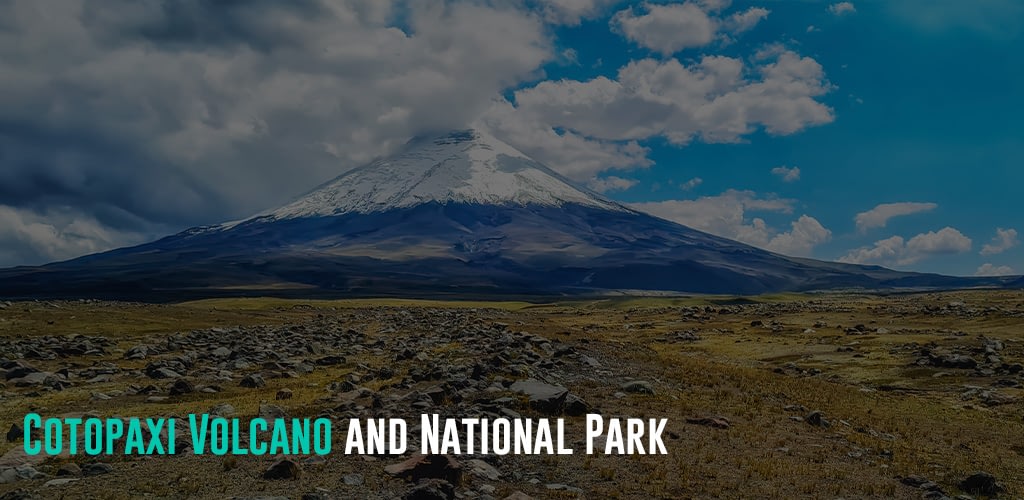
Cotopaxi National Park in the central Andes Mountains, just 50 kilometers south of Quito, is renowned for its many volcanoes, including the massive and active Cotopaxi volcano. Spanning 128.9 square miles (333.9 sq km), the park is also known for the vast Limpiopungo Lake. With its high altitude, the park features different vegetation zones, including mountain forests, Andean tundra, paramo grasslands, and snow zones. Moreover, the park is a habitat for wildlife, including hawks, condors, weasels, and the endemic Andean speckled bear.
Cotopaxi volcano has a nearly symmetrical cone shape and is Ecuador’s second-highest peak at 19,347 feet (5,897 m). It has one of the few equatorial glaciers visible from Quito and a crater with two cone rims. Although still active, the last eruption occurred in January 2016.
Cotopaxi offers numerous day tours and hiking activities, whether a day or multi-day.
El Cajas National Parks
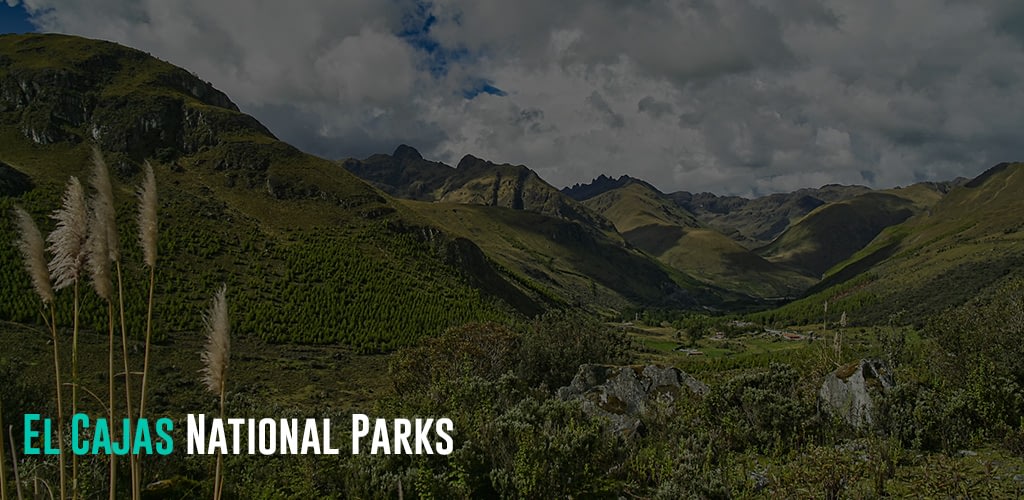
El Cajas National Park, located 30 kilometers west of Cuenca, is a must-visit destination known for its hundreds of Andean lakes, waterfalls, and rugged terrain. The park offers diverse experiences with hills, valleys, and numerous lakes—ideal for hiking, biking, kayaking, and canoeing. With altitudes over 10,170 feet, the park features tundra vegetation, cloud forests, and perennial high mountain forests.
The park spans 110.2 square miles and extends across the continental divide, resulting in two rivers flowing west toward the Pacific Ocean and two east toward the Amazon River. Visitors can encounter various wildlife, including the elusive cougar, mountain wolf, fox, and bird species like the South American Condor and Curiquinga. Luspa, the largest glacial lake, is among the hundreds of bodies of water scattered throughout the park.
Whether hiking or driving, the park’s viewpoints offer breathtaking landscapes.
Cuyabeno Wildlife Reserve
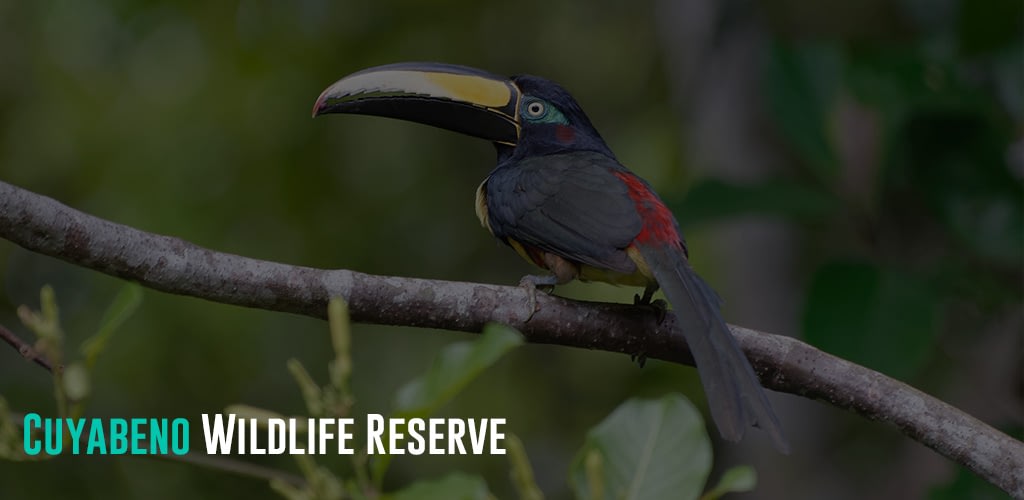
The Cuyabeno Wildlife Reserve, in Ecuador’s Amazon region, offers a tropical paradise with spectacular wildlife. Established in 1979, it is the second-largest national park in Ecuador, spanning 590,112 hectares. The reserve encompasses eight ecosystems, including watersheds and rainforests, providing a habitat for diverse species such as birds, monkeys, tapirs, anacondas, and more.
The reserve’s unique ecological characteristics, influenced by the adjacent Andes mountain range, contribute to its biodiversity. With 14 lagoons and rivers, Cuyabeno features a swamp-like flooded rainforest, making it one of the most biodiverse areas globally. Visitors can spot rare species like the pink river dolphin and the Hoatzin eagle.
Activities in Cuyabeno include jungle trekking, bird watching, cayman watching, catch-and-release fishing, night walks, and swimming with pink dolphins. Additionally, visitors can explore indigenous Siona communities to learn about their culture and traditions. Cuyabeno Wildlife Reserve presents a rare opportunity to experience the Amazon’s wonders, making it a top tourist attraction in Ecuador for nature enthusiasts.
Malecon 2000

Malecón 2000 is an urban renewal project along the Guayas River in Guayaquil, Ecuador, spanning approximately 2.5 km. Stretching from Mercado Sur to Cerro Santa Ana and Las Peñas, this boardwalk promenade is a gated and policed public space. It offers a 1.5-mile stroll featuring monuments, gardens, art museums, historical sites, a movie theater, performance space, restaurants, and a shopping mall. Additionally, visitors can enjoy river tours from the docks.
Other highlights include the Guayaquil Metropolitan Cathedral and Museo Antropológico y de Arte Contemporaneo. At the northern end, visitors can appreciate views of Las Peñas, Cerro Santa Ana, and the Puente de la Unidad Nacional (National Union Bridge) over the Río Daule. The Cinema Guayaquil offers a dioramic, narrated historical overview of the city for those with limited time.
Baños
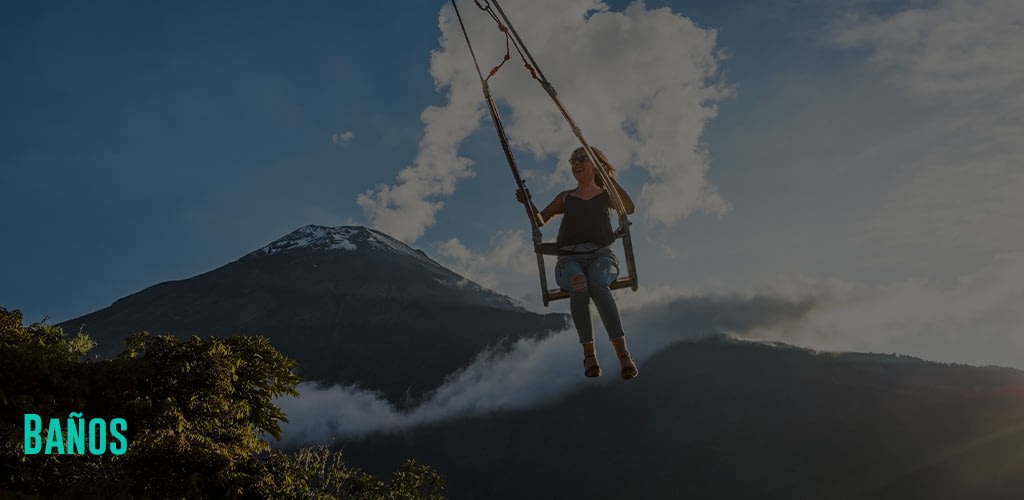
Baños de Agua Santa, commonly known as Baños, is a city in Ecuador’s Tungurahua province and serves as the “Gateway to the Amazon.” Nestled at the foothill of the active Tungurahua volcano, it is renowned for its mineral-rich hot springs and access to the Amazon Basin. The city offers diverse natural attractions, including waterfalls, rivers, mountains, and jungles, creating a laid-back atmosphere.
In Baños, visitors can engage in various activities, such as swinging on the Tree at the End of the World at Casa De Arbol and exploring the Ruta de las Cascadas (Road of the Waterfalls). Notable waterfalls along this route include Pailón del Diablo, Cascada Agoyan, Cascada la Piedra, Cascada Agollan, Cascada Rocio Machay, Manto de la Novia, and many others. Travelers can also enjoy recreational opportunities like hiking and mountain biking. Moreover, adventure sports like whitewater rafting, kayaking, ziplining, and canyoning are prevalent.
The town is surrounded by lush forests and situated at a high altitude, approximately 1800 meters, requiring precautions against altitude sickness. Another noteworthy landmark includes the Virgen de Agua Santa church, which has a famous statue of Mary.
Visitors can also explore the Amazon jungles by taking a guided tour to Puyo, experiencing a canoe ride on the Puyo River, and learning about indigenous communities.
Otavalo Market

Otavalo is a small town in Ecuador renowned for the handiwork of its indigenous people and the famous artisan market every Saturday in the Plaza de Ponchos. This market showcases diverse local arts and crafts, wood and stone carvings, woven textiles, and various local spices. One of South America’s largest permanent markets, Otavalo is a one-stop shop for alpaca wool garments, handmade Ecuadorian jewelry, native art, and souvenirs. One of the unique finds in the market is the tagua nut jewelry made from the Ecuadorian Ivory Palm tree. Otavalo is accessible from Quito by a two-hour local bus ride.
Primary Spoken Language(s)
Spanish is the official language spoken by most of the population in Ecuador and the Galapagos Islands. The second commonly used language, particularly in the highlands, is Kichwa (Quechua). Another recognized regional language is Shuar. Meanwhile, English is not widely spoken throughout Ecuador and is only commonly used in tourist areas.
Safety Concerns
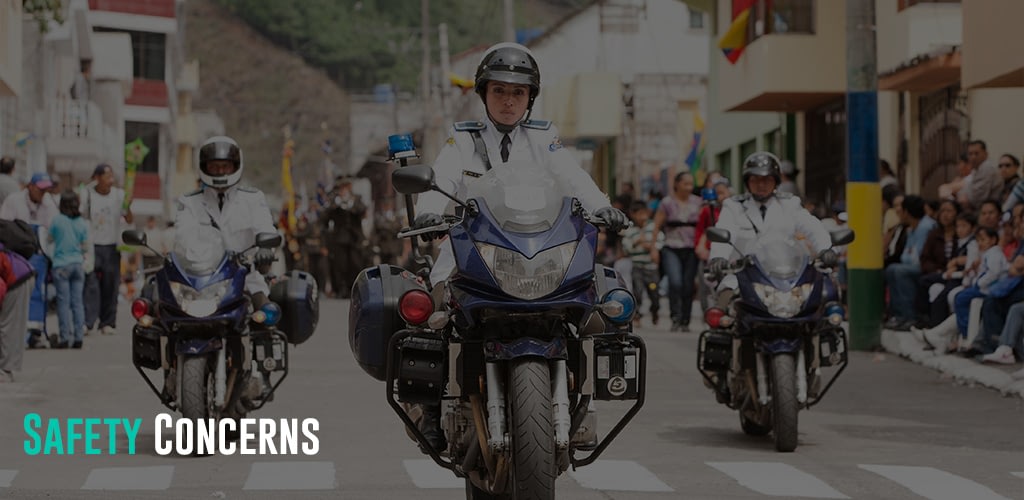
Ecuador is a relatively safe destination for travelers, ranking 97th out of 161 countries on the 2023 Global Peace Index. As of June 22, 2023, Ecuador has a Level 2 Travel Advisory from the US Department of State. Hence, travelers are advised to practice some safety precautions.
Violent and high crime is a common problem in Ecuador, but the main tourist concerns are theft, snatching, and pick-pocketing. Criminals target crowded areas, taxis, buses, and transport terminals. Hence, be vigilant in public and always hold your bags and belongings. Keep valuables, cellphones, and jewelry out of sight.
Robberies also occur in public transport and taxis in Quito, Guayaquil, Manta, Machala, and Playas. In some cases, robbers take travelers to the nearest ATM and force them to withdraw everything. Hence, ride only registered taxis and avoid hailing one along the streets. Always lock your car door and windows up for safety.
Another frequent scenario in Ecuador is demonstrations, usually politically and economically motivated. Protesters routinely block roads and highways and may disrupt travel. For safety, do not go near areas with protests.
Numerous country advisories also suggest avoiding travel to the coastal provinces of Esmeraldas, Manabi, Santa Elena, El Oro, Los Ríos, and Santo Domingo de los Tsáchilas. This is due to the prevalence of drug and gang-related violence.
In an emergency, dial the hotline number 911 in Quito and Ibarra; 112 for Guayaquil, Cuenca, and Loja; and 101 for all other areas.
Natural Hazard
Ecuador has numerous active volcanoes and is in the active seismic zone (Pacific Ring of Fire). Hence, natural disasters such as earthquakes, volcanic eruptions, and tsunamis can happen.
One of the active volcanoes that pose natural hazards is Tungurahua, in which mud or lava flows can affect travelers in Baños. Secondly, the Cotopaxi volcano can directly affect the town of Latacunga and some low-lying areas in Quito and may trigger avalanches and landslides. One of the most active in Ecuador, the Reventador volcano poses a threat in Napo province. Lastly, local authorities advise against approaching the Sangay volcano in Morona Santiago province, including the nearby Upano River.
Apart from the seismic threats, flooding can happen during the rainy season from December to May. Also, the weather changes rapidly, which may affect your adventures.
In the event of a natural disaster, pay attention to the news and follow the advice of authorities. Travelers can also check out the National Secretariat for Risk Management (SNGR) and Geoportal for information on wave threat level reports, vulnerability, risk, and early warning systems in Ecuador.
Health Hazard
Many cities and areas in Ecuador are at high altitudes, including Quito at 2800 meters. Hence, be aware of the symptoms of altitude sickness and take precautions before you travel. Travelers with a risk for altitude sickness must seek advice from their physicians before traveling to Ecuador.
In addition, Ecuador has a high prevalence of insect-borne diseases. It includes yellow fever, malaria, dengue, chikungunya, Chagas disease, and Zika virus. Although not mandatory, vaccinations against yellow fever and Malaria prophylaxis are highly recommended for travelers going to Morona-Santiago, Napo, Orellana, Pastaza, Sucumbios, and Zamora-Chinchipe and the province west of the Cordillera, Esmeraldas.
Budget Considerations

Traveling to Ecuador can be inexpensive. However, visiting the Galapagos Islands quickly adds up the cost. Prices for hotels, transport, meals, and essential commodities are low and more comparable with Southeast Asia than with continental Africa.
Accommodation
Accommodation is inexpensive in Ecuador. Hostels are widely available, where a dorm bed starts at $6 per night and $11 for a private room. Free Wi-Fi is standard, and many hostels also include complimentary breakfast.
Travelers can also find budget hotels at $25; Airbnb properties cost $15 for a room and around $25 for an entire apartment. For more comfort, visitors can stay in a 3-star hotel for $35 and a 5-star hotel at $90.
The cost of accommodations is higher in the Galapagos. A hostel dorm bed starts at $20, and private rooms at $35. Depending on the location, a 3-star hotel costs $50, while 5-star resort properties cost $280.
For those backpackers traveling with a tent, camping is available nationwide. Campground prices start at $5, and most national parks have campsites.
Food
Ecuadorian cuisine has Spanish influences, featuring ceviche, empanadas, arroz con pollo, and ilapinchagos (fried potato cakes with cheese). The food staples are potatoes and cassava in the jungle and mountainous regions and meat and seafood in the coastal and lowlands.
Foods are inexpensive, around $1-2, at street food stalls. Expect to pay $3-5 for traditional meals in local sit-in diners, while Western restaurants are around $10-12 for a meal. Meanwhile, a meal at a mid-range restaurant costs around $20 per person.
Travelers who want to go grocery shopping and cook can expect to spend around $30 weekly on basic staples like bread, milk, eggs, cheese, chicken, fruit, and vegetables.
Attractions and Transportation
Most attractions and destinations in Ecuador are either free or inexpensive. Climbing the towers of Cathedral de la Inmaculada for a stunning city view of Cuenca is $2.50 while entering the lava tubes of Puerto Ayora is $3.50. Meanwhile, the national park fees vary between $10 and $100. When visiting the Galapagos, consider the $100 entrance fee and expect a $10 admission fee to Isabela Island.
On the other hand, traveling by bus in Ecuador is inexpensive at $0.25 for short trips. For comfort, hiring a taxi costs $60, while renting a 4WD vehicle costs $80.
Average Two-Week Cost
Budget travelers in Ecuador can live with a $30 daily budget or $420 for two weeks. It covers the costs of staying in a hostel dorm bed, dining on street food stalls, and taking the bus for transportation. On this budget, travelers mainly do free activities on the beach and hiking in the parks.
On a mid-range budget of $100 daily or $1400 in two weeks, travelers can comfortably stay in a 3-star hotel. The budget also includes dining out at local and mid-range restaurants, taking occasional taxis, and doing a few paid tours and activities.
Lastly, travelers can enjoy luxury in Ecuador from $250 daily to $3500 for two weeks. It includes staying in a five-star hotel and beachfront properties, dining anywhere, 4WD vehicle rental, and availing all the paid tours and activities they want. So, for them, the sky is the limit for travel.
Customs And Import Restrictions
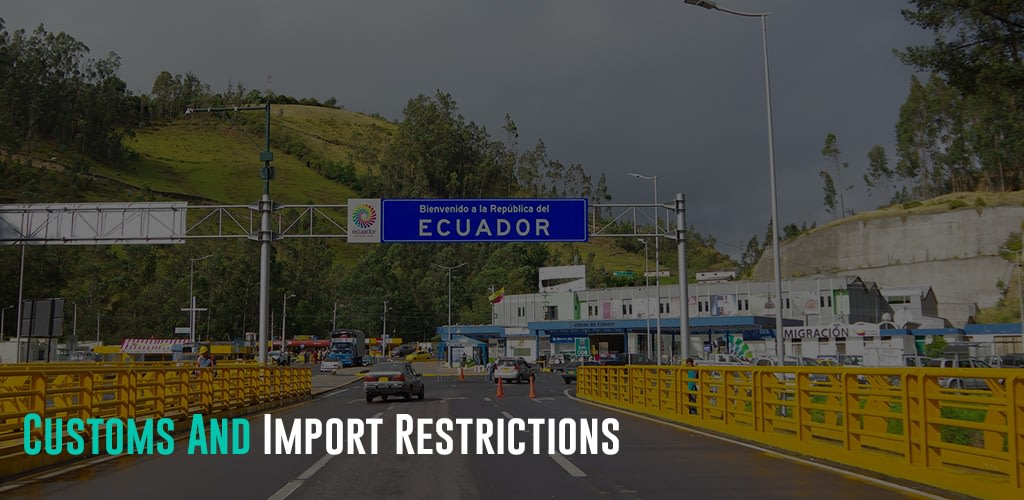
Travelers to Ecuador can bring goods and personal effects free from import duties and taxes. They may bring along goods not exceeding the following:
- 5 liters of alcoholic beverages
- 20 packs of cigarettes of 20 units, 1 pound of tobacco, and 25 units of cigars.
- 500 ml of perfume
- drone amounting to less than $1000
But note that alcohol and tobacco allowance exemptions do not apply to travelers under 18.
There are no restrictions on the number of foreign currencies a visitor can bring. However, travelers bringing over $10,000 or its equivalent to foreign currency must declare such amount to Customs. It is also important to note that there is a 5 percent tax on currency taken out of Ecuador above $1200.
Furthermore, restrictions on some goods may require permits from pertinent authorities and an import or export permit. These include the following:
- plants, fruits, vegetables, and their by-products
- pets, animals, meat, and meat products
Customs authorities in Ecuador prohibit the entry of the following goods and items:
- illegal drugs and narcotics
- weapons, explosives, ammunition, and deadly weapons
- Endangered species of plant, live animals, and their products.
- counterfeit money and goods
- pornographic materials
For further information, please visit Ecuador’s Customs Authority portal for the list of import and export restrictions.
Climate Considerations
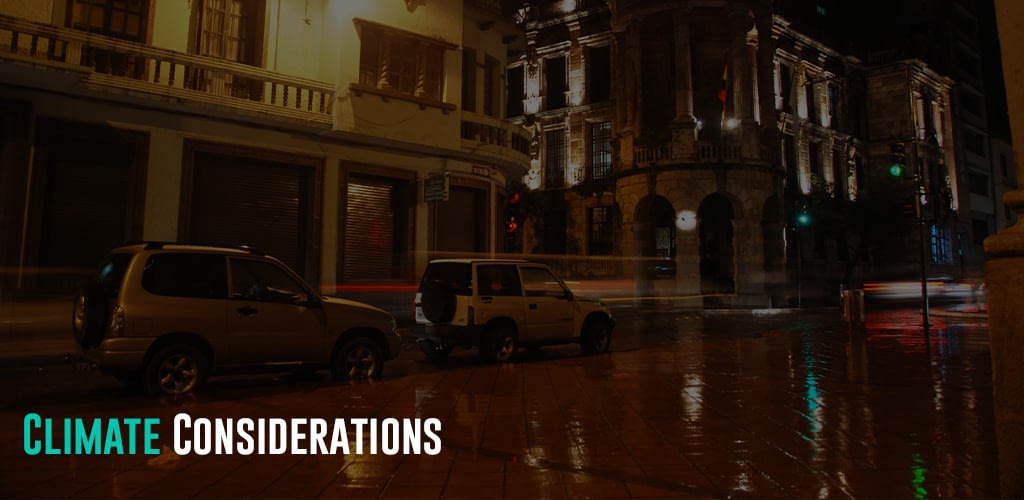
With its location on the equator, Ecuador has two seasons – wet and dry. June to December is the dry season, with August as the coldest month, while the wet season lasts from January to May. Ecuador also experiences slight variations in daylight hours, with sunrise and sunset occurring daily at six o’clock.
Ecuador has a significant climate variation, depending on the altitude and region. The Pacific coastal area has a tropical climate with an average temperature of 25 °C and rainy weather between January and April. It is mild year-round in the mountain valleys, while Quito has a subtropical highland climate at 21 °C daytime temperature that drops to 10 °C at night. The Andean highlands have a temperate and relatively dry climate, with rainforests in the lowlands. At the same time, the Amazon basin on the eastern side of the mountains shares the climate of other rainforest zones.
Ecuador faces a significant threat from climate change, impacting its diverse geography and vulnerable ecosystems. Ecuador’s seven glaciers have lost 54.4% of their surface in forty years, with a predicted disappearance by 2100. These glaciers, including Antisana, Cotopaxi, Chimborazo, Cayambe, the Ilinizas (north and south), El Altar, and Carihuairazo, all located on volcanic craters, are particularly affected by global warming. Carihuairazo is already losing 96% of its glacier surface and can disappear within five years with the continued worsening of climate change. Glacier shrinkage has worsened over the last 20 years with climate change. The shrinking glaciers, crucial for climate regulation, play a role in gathering atmospheric circulation from the Pacific and humidity from the Amazon region, posing a threat to fauna, flora, and the population.
Primary Transportation Options
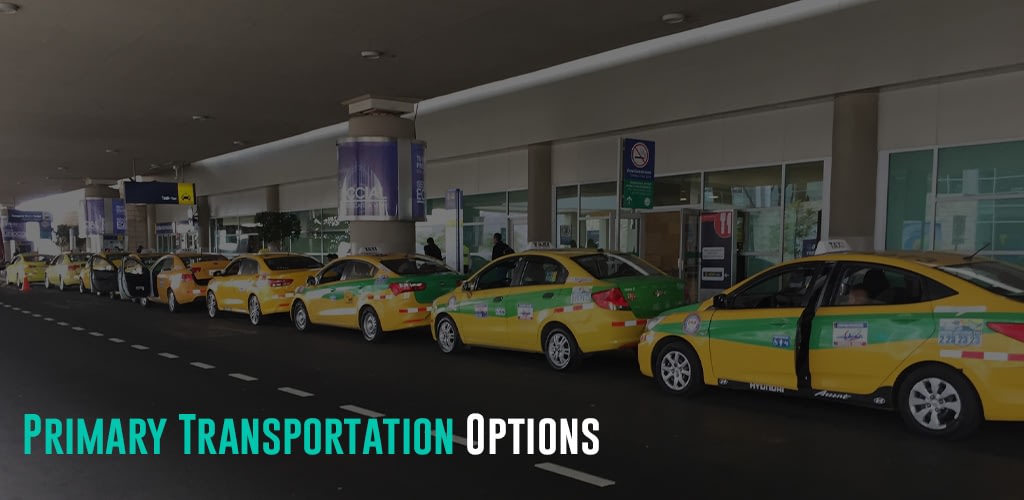
Generally, transportation in Ecuador is inexpensive. The country’s geographical location allows travelers to reach it by land, sea, and air. In addition, ports, airports, and terminals are in strategic locations, giving convenience to travelers. However, expect some bumpy rides as most of the roads are unpaved. The Pan-American Highway, or Panamericana, often called la Pana by locals, forms the backbone of the country’s road network. It links all the major highland towns and cities from Tulcán to Loja and Peru. A handful of other good roads cover the routes to Andes, Guayaquil, Manta, and Esmeraldas.
Air
The main gateway for international flights to Ecuador is the Mariscal Sucre International Airport in Quito and the José Joaquín de Olmedo International Airport in Guayaquil. Travelers can also take domestic flights to other destinations in Ecuador, including the Seymour and San Cristobal Airports in the Galapagos Islands.
TAME Airlines is Ecuador’s flag carrier, operating domestic and international destinations. Other airlines that serve the country’s air traffic include Avianca, Emetebe, Latam, Equair, Aeroregional Ecuador, Galapagos Airways, and EC Plus Airlines.
Flying from mainland Ecuador to the Galapagos is the most practical way to reach the islands. While most airfares within the mainland are affordable, flights to the Galapagos Islands are more than double.
Boat
Cruises and boat trips are a common way to travel around the Galápagos islands, with options from small yachts and larger cruise ships. It may be expensive but scenic, allowing travelers to see more wildlife on their way to the islands. Travelers may also need to travel by speedboat or canoe to some Amazon destinations, including the Cuyabeno Wildlife Reserve.
Car Rental
Renting a car in Ecuador is suitable for exploring off-the-beaten-track destinations, but drivers must be at least 21 years old and may face extra charges if under 25. Car rental can be arranged in advance or on arrival, with costs comparable to Europe or North America. Rental rates are $35 daily for a hatchback and around $80 for a mid-size 4WD. However, with Ecuador’s road conditions, taking a taxi or bus is easier and cheaper. Main highways are well-maintained, particularly the Pan-American Highway and the Avenue of Volcanoes, but minor roads may require a 4WD due to deteriorating conditions. They drive on the right-hand side of the road, and checking the forecast is advisable as weather quickly changes and landslides are common.
Bus
Traveling by bus is one of the most common and efficient ways of getting around in Ecuador. The bus network is extensive, affordable, and with numerous companies operating on popular routes. Comfort levels vary, ranging from air-conditioned buses with amenities to older, less comfortable options. Luxury buses are ideal for long-distance travel, requiring pre-booked tickets and only stopping at scheduled destinations, reducing travel time. Travelers can use the latinbus to look up routes and prices.
Major towns have main bus terminals, while smaller ones may have scattered company offices. Local city buses in larger towns have fixed fares and display routes, with fares from $0.25. Travelers can hail them at designated bus stops in Quito and request your stop whenever it comes along in other areas.
Aside from local buses, Quito has a bus rapid transit line called Trolebus. It operates at the center of Avenida 10 de Agosto – the north-south spine of the city. Moreover, Quito Trolebus has four bus routes, plying to 55 bus stops.
In remote areas, comfort may decrease, and standard buses stop anywhere until full. Local services diminish after nightfall, and pick-up trucks, minibuses, and open-sided trucks may fill gaps in the network. Night travel is discouraged for safety reasons.
For convenience, travelers can also take the hop-on-hop-off bus services of Ecuador Hop and Wanderbus. They have a variety of routes and passes, traveling to numerous destinations and itineraries.
Taxis
Taxis are common in Ecuadorian towns and cities, offering a convenient alternative for exploration and short trips. They are easily identifiable by their yellow bodies, orange license plates, and registration stickers on their windshields. While major city taxis are metered, some drivers refuse to use the taxi meters. Hence, agreeing on a fare before starting the journey is advisable. Standard minimum fares range from $1 to $2, increasing at night between $1.50 and $4 for short trips.
Taxis are also helpful in reaching remote places like national parks, with day-hire costs starting at around $60. App-based services like Uber, Cabify, and Easy Taxi are available in select cities like Quito, Cuenca, and Guayaquil, providing transparent fees. Remember to take only registered cabs for safety reasons.
Start Trip Planning
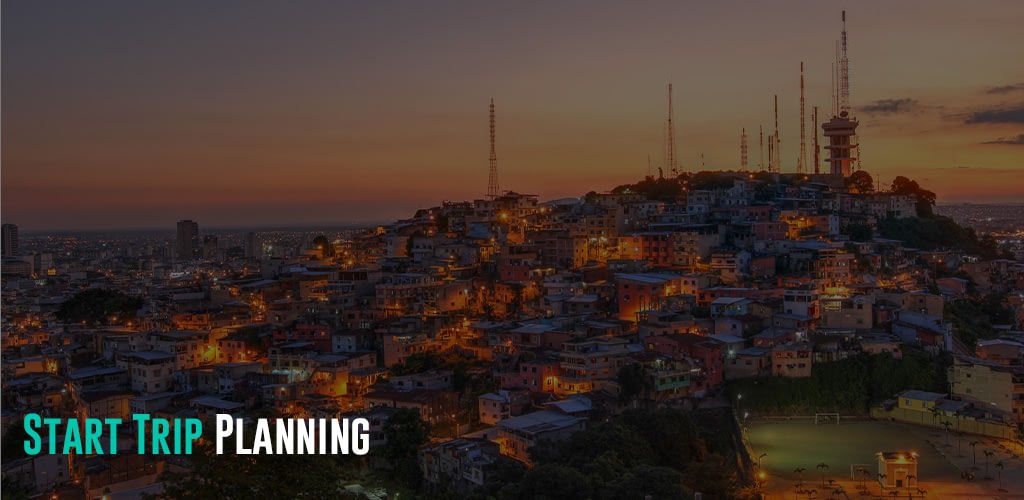
Travel-Wise is made from the ground up to help people travel more, break down the barriers that make it challenging to get going, and start your journey as painlessly as possible. Bookmark our other Country Guides to help kick-start your research for future travels. We also offer templated itineraries from our staff and community that help serve as a building block for your trip plans. Alternatively, we also utilize AI to provide a way to generate itinerary ideas. This saves much time just getting you up and running with a template. From there, you can use the trip planner to create your customized itinerary, invite friends and family for collaboration, find others from Travel-Wise to join the trip, book and track important information, journal, and share your experiences at the end or along the way!

